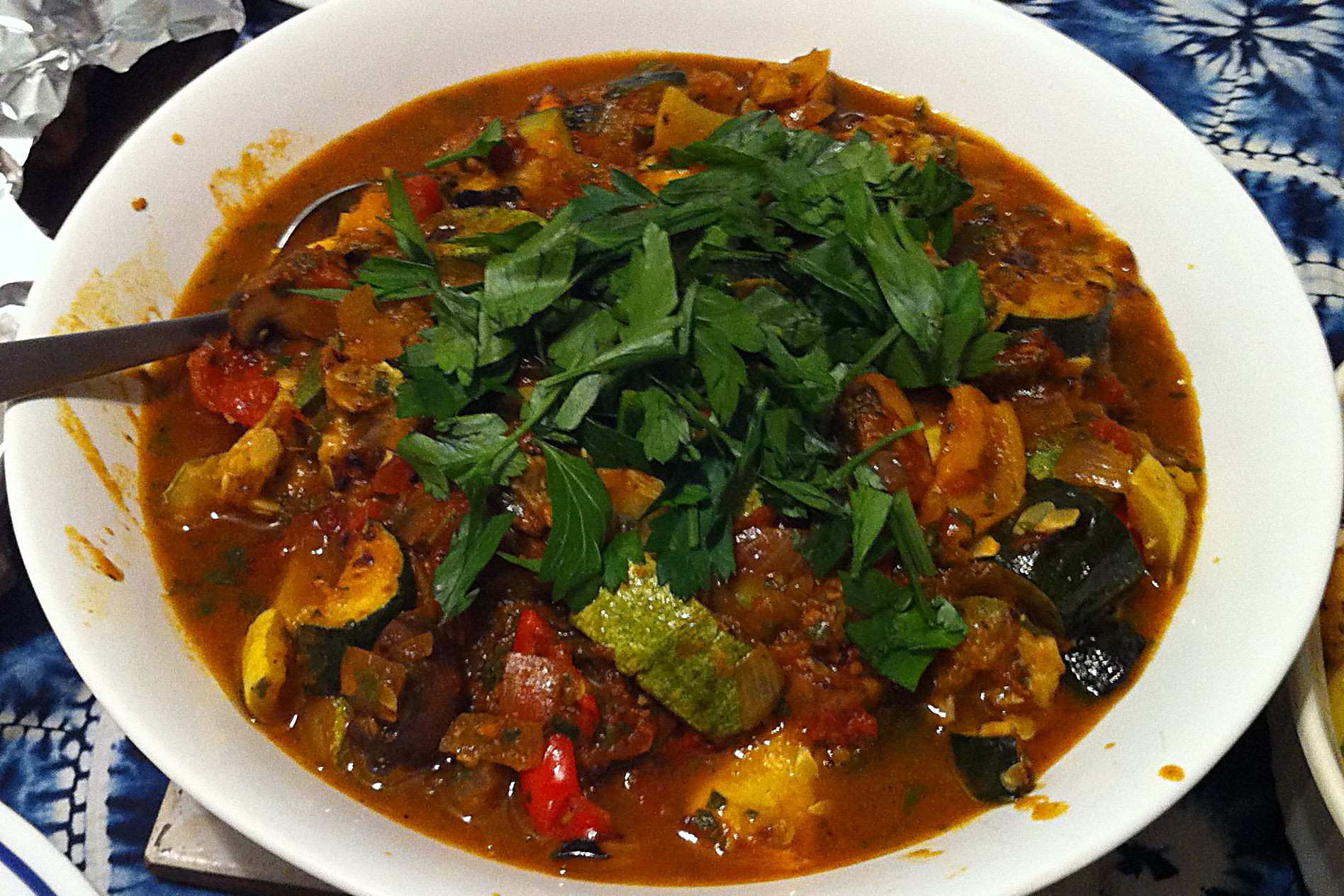
Ciambotta, a hearty vegetable stew from Southern Italy, is a dish that brings together the best of Mediterranean flavors. This rustic meal, often enjoyed during the summer months, showcases a variety of fresh vegetables like tomatoes, zucchini, eggplant, and bell peppers. But what makes ciambotta special? It's the simplicity and versatility. Each region, even each family, has its own twist on the recipe, making every bowl unique. Whether served as a main course or a side dish, ciambotta is a celebration of seasonal produce and traditional cooking methods. Ready to learn more about this delicious Italian classic? Let's dive into 31 fascinating facts about ciambotta!
What is Ciambotta?
Ciambotta, also known as "giambotta," is a traditional Italian vegetable stew. This hearty dish is popular in Southern Italy, especially in regions like Campania, Calabria, and Basilicata. It's a versatile meal that can be enjoyed hot or cold, often featuring a mix of seasonal vegetables.
- Ciambotta is a vegetable stew that originated in Southern Italy.
- The name "ciambotta" varies by region, sometimes called "giambotta" or "ciambrotta."
- This dish is known for its flexibility, allowing cooks to use whatever vegetables are in season.
- Common ingredients include zucchini, eggplant, tomatoes, potatoes, and bell peppers.
- Ciambotta is often served with bread to soak up the flavorful broth.
Historical Roots of Ciambotta
Understanding the history of ciambotta gives insight into its cultural significance. This dish has been a staple in Italian households for generations, reflecting the agricultural abundance of the region.
- Ciambotta has ancient roots, dating back to the times when Italian farmers needed to use up surplus vegetables.
- The dish is a symbol of frugality and resourcefulness, making the most of available ingredients.
- It was traditionally cooked in a large pot over an open flame.
- Ciambotta is often associated with peasant cuisine, highlighting its humble origins.
- The recipe has been passed down through generations, often with slight variations.
Regional Variations of Ciambotta
Each region in Southern Italy has its own twist on ciambotta, reflecting local tastes and available produce. These variations make the dish even more interesting and diverse.
- In Campania, ciambotta often includes seafood like mussels or clams.
- Calabrian ciambotta is known for its spicy kick, often using hot peppers.
- Basilicata's version might include sausage or other meats for added richness.
- Some regions add cheese like pecorino or parmesan for extra flavor.
- In Apulia, ciambotta is sometimes served with pasta for a heartier meal.
Cooking Techniques for Ciambotta
The way ciambotta is prepared can vary, but some techniques are common across most recipes. These methods help to bring out the best flavors from the vegetables.
- Vegetables are usually sautéed first to enhance their flavors.
- The dish is often simmered slowly to allow the ingredients to meld together.
- Some recipes call for roasting the vegetables before adding them to the stew.
- Fresh herbs like basil, oregano, and parsley are commonly used for seasoning.
- A splash of wine or vinegar can be added for acidity and depth of flavor.
Nutritional Benefits of Ciambotta
Ciambotta is not just delicious; it's also packed with nutrients. The variety of vegetables used in the dish provides a range of health benefits.
- Ciambotta is low in calories but high in vitamins and minerals.
- The dish is rich in fiber, aiding in digestion.
- It provides a good source of antioxidants from the tomatoes and bell peppers.
- The stew is also a great way to get your daily intake of vegetables.
- It's a vegan-friendly dish, making it suitable for various dietary preferences.
Serving Suggestions for Ciambotta
Ciambotta can be enjoyed in many ways, making it a versatile addition to any meal plan. Here are some ideas on how to serve this delicious stew.
- Serve ciambotta as a main course with a side of crusty bread.
- It can be a side dish to accompany grilled meats or fish.
- Use ciambotta as a topping for pasta or rice.
- Enjoy it cold as a refreshing summer dish.
- Pair ciambotta with a glass of red wine for a complete Italian dining experience.
Fun Facts about Ciambotta
To wrap things up, here are some fun and quirky facts about ciambotta that you might not know.
- Ciambotta is sometimes referred to as the "Italian ratatouille" due to its similarity to the French dish.
The Final Bite
Ciambotta isn't just a dish; it's a slice of Italian culture. Packed with fresh veggies, herbs, and a touch of love, this stew has warmed hearts and homes for generations. Whether you’re a seasoned chef or a kitchen newbie, ciambotta offers a simple yet flavorful way to enjoy a hearty meal.
Remember, the beauty of ciambotta lies in its versatility. Feel free to tweak the recipe to suit your taste buds or whatever veggies you have on hand. Serve it hot with crusty bread or as a side dish to your favorite protein.
Next time you crave comfort food, give ciambotta a try. It’s a delicious way to bring a bit of Italy into your kitchen. Enjoy every spoonful and share the joy with family and friends. Buon appetito!
Was this page helpful?
Our commitment to delivering trustworthy and engaging content is at the heart of what we do. Each fact on our site is contributed by real users like you, bringing a wealth of diverse insights and information. To ensure the highest standards of accuracy and reliability, our dedicated editors meticulously review each submission. This process guarantees that the facts we share are not only fascinating but also credible. Trust in our commitment to quality and authenticity as you explore and learn with us.
